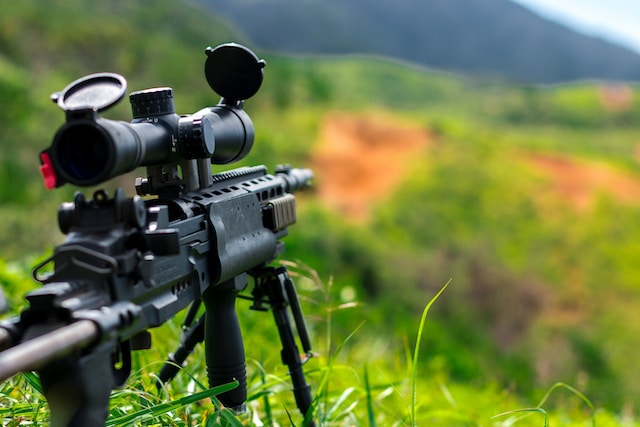
Choosing the right scope for hunting depends on various factors, including the type of game you're pursuing, the environment you'll be hunting in, and your personal preferences. Here are some general guidelines for selecting scopes for different types of hunts:
-
Big Game Hunting:
- Deer, Elk, and Larger Mammals: For big game hunting, a scope with a moderate magnification range (3-9x or 4-12x) is typically sufficient. This allows you to effectively engage targets at varying distances in woodland or open terrain.
-
Small Game and Varmint Hunting:
- Rabbits, Squirrels, and Small Predators: For smaller game or varmint hunting, especially in dense or wooded areas, a lower magnification scope (1-4x or 2-7x) can be ideal. It provides a wider field of view and allows for quick target acquisition.
-
Long-Range Hunting:
- Pronghorn, Mule Deer, or Western Big Game: For hunting in open, wide expanses where shots may be taken at longer distances, a scope with higher magnification (6-18x or more) and adjustable turrets for precise shot placement is recommended.
-
Predator and Coyote Hunting:
- Coyotes, Foxes, and Other Predators: A versatile scope with a moderate magnification range (3-9x or 4-12x) is often suitable for predator hunting. It allows for quick target acquisition at closer ranges but still provides the ability to take longer shots if needed.
-
Waterfowl and Upland Bird Hunting:
- Ducks, Geese, Pheasants, Grouse, etc.: Shotgun scopes or red dot sights with a wide field of view and low magnification are commonly used for bird hunting. They provide quick target acquisition and are suitable for fast-moving targets.
-
Tactical and Precision Shooting:
- Precision Rifle Competitions or Tactical Shooting: These scenarios often require scopes with high magnification (10x and above), mil-dot or MOA reticles, and adjustable turrets for precise shot placement at varying distances.
-
Low-Light or Dawn/Dusk Hunting:
- Hunting in Low Light Conditions: Look for scopes with larger objective lenses (at least 40mm or larger) to gather more light. Consider scopes with illuminated reticles for better visibility in low-light situations.
-
Variable vs. Fixed Magnification:
- Variable magnification scopes allow you to adjust the zoom level, offering versatility for different hunting scenarios. Fixed magnification scopes have a set zoom level and can be more straightforward and reliable.
-
Reticle Type:
- Choose a reticle that suits your preferences and hunting conditions. Common types include duplex, BDC (Bullet Drop Compensating), mil-dot, and illuminated reticles.
-
Durability and Weather Resistance:
- Ensure that the scope is rugged, shockproof, and waterproof. Hunting often exposes equipment to rough conditions, so durability is crucial.
Remember, personal preference plays a significant role in choosing a scope. It's recommended to try out different scopes and consider factors like eye relief, clarity, and ease of adjustment before making a final decision. Additionally, consider the specific regulations and requirements for hunting in your area, as some regions may have restrictions on certain types of scopes or features.

